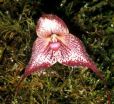(Press-News.org) Boulder, CO, USA - The giant dragonflies of ancient Earth with wingspans of up to 70 centimeters (28 inches) are generally attributed to higher oxygen atmospheric levels in the atmosphere in the past. New experiments in raising modern insects in various oxygen-enriched atmospheres have confirmed that dragonflies grow bigger with more oxygen, or hyperoxia.
However, not all insects were larger when oxygen was higher in the past. For instance, the largest cockroaches ever are skittering around today. The question becomes how and why do different groups respond to changes in atmospheric oxygen.
The secrets to why these changes happened may be in the hollow tracheal tubes insects use to breathe. Getting a better handle on those changes in modern insects could make it possible to use fossilized insects as proxies for ancient oxygen levels.
"Our main interest is in how paleo-oxygen levels would have influenced the evolution of insects," said John VandenBrooks of Arizona State University in Tempe. To do that they decided to look at the plasticity of modern insects raised in different oxygen concentrations. The team raised cockroaches, dragonflies, grasshoppers, meal worms, beetles and other insects in atmospheres containing different amounts of oxygen to see if there were any effects.
One result was that dragonflies grew faster into bigger adults in hyperoxia. However, cockroaches grew slower and did not become larger adults. In all, ten out of twelve kinds of insects studied decreased in size in lower oxygen atmospheres. But there were varied responses when they were placed into an enriched oxygen atmosphere. VandenBrooks will be presenting the results of the work on Monday, Nov. 1 at the annual meeting of the Geological Society of America in Denver.
"The dragonflies were the most challenging of the insects to raise," said VandenBrooks because, among other things, there is no such thing as dragonfly chow. As juveniles they need to hunt live prey and in fact undergraduate students Elyse Muñoz and Michael Weed working with Dr. VandenBrooks had to resort to hand feeding the dragonflies daily.
"Dragonflies are notoriously difficult to rear," said VandenBrooks. "We are one of the only groups to successfully rear them to adulthood under laboratory conditions."
Once they had worked that out, however, they raised three sets of 75 dragonflies in atmospheres containing 12 percent (the lowest oxygen has been in the past), 21 percent (like modern Earth's atmosphere) and 31 percent oxygen (the highest oxygen has been).
Cockroaches, as anyone who has fought them at home knows, are much easier to rear. That enabled the researchers to raise seven groups of 100 roaches in seven different atmospheres ranging from 12 percent to 40 percent oxygen mimicking the range of paleo-oxygen levels. Cockroaches took about twice as long to develop in high oxygen levels.
"It is the exact opposite of what we expected," said VandenBrooks. One possibility is that the hyperoxic reared roaches stayed in their larval stage longer, perhaps waiting for their environment to change to a lower, maybe less stressful oxygen level.
This surprising result prompted the researchers to take a closer look at the breathing apparatus of roaches – their tracheal tubes. These are essentially hollow tubes in an insect's body that allow gaseous oxygen to enter directly into the insect tissues.
VandenBrooks and his team took their hyperoxic reared roaches to Argonne National Lab's x-ray synchrontron imaging facility to get a closer look at the tracheal tubes. The x-ray synchrontron is particularly good at resolving the edges where things of different phases meet – like solids on liquids or gas on solids. That's just what the inside of a tracheal tube is.
What they found was that the tracheal tubes of hyperoxic reared roaches were smaller than those in lower oxygen atmospheres. That decrease in tube size with no increase in the overall body size would allow the roaches to possibly invest more in tissues used for other vital functions other than breathing – like eating or reproducing. The roaches reared in hypoxia (lower oxygen) would have to trade off their investment in these other tissues in order to breathe.
The next step, said VandenBrooks, will be to look closely at the tracheal tubes of insects fossilized in amber to see what they might say about oxygen levels at various times in the past. These might possibly serve as a proxy for paleo-oxygen levels.
"There have been a lot of hypotheses about the impact of oxygen on evolution of animals, but nobody has really tested them," said VandenBrooks. "So we have used a two-pronged approach: 1) study modern insects in varying oxygen levels and 2) study fossil insects and understand changes in the past in light of these results."
INFORMATION:
WHAT
Paper No. 77-5: ATMOSPHERIC OXYGEN AND THE EVOLUTION OF INSECT GIGANTISM
http://gsa.confex.com/gsa/2010AM/finalprogram/abstract_181665.htm
WHEN & WHERE
9:00 AM-9:15 AM, Monday, 1 November 2010
Colorado Convention Center: Room 605
Session No. 77: Paleontology IV - Environmental Controls on Ecology and Evolution
http://gsa.confex.com/gsa/2010AM/finalprogram/session_27549.htm
For on-site assistance during the 2010 Annual Meeting, 31 October November, contact Christa Stratton in the Newsroom (7:30 a.m.-6:00 p.m. MDT), Colorado Convention Center, Room 206, +1-303-228-8429.
The Geological Society of America, founded in 1888, is a scientific society with more than 22,000 members from academia, government, and industry in more than 97 countries. Through its meetings, publications, and programs, GSA enhances the professional growth of its members and promotes the geosciences in the service of humankind. Headquartered in Boulder, Colorado, GSA encourages cooperative research among earth, life, planetary, and social scientists, fosters public dialogue on geoscience issues, and supports all levels of earth science education.
www.geosociety.org
Raising giant insects to unravel ancient oxygen
2010-10-30
ELSE PRESS RELEASES FROM THIS DATE:
Troubled islands: Hurricanes, oil spill and sea level rise
2010-10-30
Boulder, CO, USA - The islands flanking the outlet of the Mississippi River are not only facing losses due to sea level rise and local subsidence, according to one study, but new unknown impacts from oil recovery operations, say researchers working on another project. Both will be presenting their work on Nov. 1 and 2 at the meeting of the Geological Society of American in Denver. Some islands could disappear entirely in coming decades, exposing huge swaths of marshland to the waves of the open sea.
On one side of the Mississippi River outlet, to the east of the river ...
Newly discovered gene enables fish to 'disappear'
2010-10-30
Researchers led by Vanderbilt's Roger Cone, Ph.D., have discovered a new member of a gene family that has powerful influences on pigmentation and the regulation of body weight.
The gene is the third member of the agouti family. Two agouti genes have been identified previously in humans. One helps determine skin and hair color, and the other may play an important role in obesity and diabetes.
The new gene, called agrp2, has been found exclusively in bony fish, including zebrafish, trout and salmon. The protein it encodes enables fish to change color dramatically to match ...
Animal evolution springs from 'Snowball Earth'
2010-10-30
Biogeochemists have found new evidence linking "Snowball Earth" glacial events to the rise of early animals. The research was funded by the National Science Foundation (NSF).
Study results appear in this week's issue of the journal Nature.
The controversial Snowball Earth hypothesis posits that, on several occasions, the Earth was covered from pole to pole by a thick sheet of ice lasting for millions of years.
These glaciations, the most severe in Earth history, occurred from 750 to 580 million years ago.
In the aftermath, the researchers discovered, the oceans ...
Advance could change modern electronics
2010-10-30
CORVALLIS, Ore. – Researchers at Oregon State University have solved a quest in fundamental material science that has eluded scientists since the 1960s, and could form the basis of a new approach to electronics.
The discovery, just reported online in the professional journal Advanced Materials, outlines the creation for the first time of a high-performance "metal-insulator-metal" diode.
"Researchers have been trying to do this for decades, until now without success," said Douglas Keszler, a distinguished professor of chemistry at OSU and one of the nation's leading ...
Dracula orchids and goblin spiders
2010-10-30
Dracula orchids tempt flies by masquerading as mushrooms. Goblin spiders lurk unseen in the world's leaf litter. The natural world is often just as haunting as the macabre costumes worn on city streets, as highlighted by two studies published this year by curators in the Division of Invertebrate Zoology at the American Museum of Natural History, David Grimaldi and Norman Platnick.
DRACULA ORCHIDS
According to Grimaldi and colleagues, fruit flies (Drosophilidae) of the genus Zygothrica typically swarm on mushrooms and other rain forest fungi. But one group of orchids ...
Spice in curry could prevent liver damage
2010-10-30
ST. LOUIS -- Curcumin, a chemical that gives curry its zing, holds promise in preventing or treating liver damage from an advanced form of a condition known as fatty liver disease, new Saint Louis University research suggests.
Curcurmin is contained in turmeric, a plant used by the Chinese to make traditional medicines for thousands of years. SLU's recent study highlights its potential in countering an increasingly common kind of fatty liver disease called non-alcoholic steatohepatitis (NASH). Linked to obesity and weight gain, NASH affects 3 to 4 percent of U.S. adults ...
Scripps Research team 'watches' formation of cells' protein factories for first time
2010-10-30
LA JOLLA, CA – October 29, 2010 – For Immediate Release – A team from The Scripps Research Institute has revealed the first-ever pictures of the formation of cells' "protein factories." In addition to being a major technical feat on its own, the work could open new pathways for development of antibiotics and treatments for diseases tied to errors in ribosome formation. In addition, the techniques developed in the study can now be applied to other complex challenges in the understanding of cellular processes.
Identifying and observing the molecules that form ribosomes—the ...
Shuttle mice to boost disease research
2010-10-30
GALVESTON, Texas — When the space shuttle Discovery lifts off on its final flight Nov. 2, its six astronauts will be joined by 16 rodent passengers on a historic mission of their own.
Riding in special self-contained modules that automatically supply them with food and water, the mice will be part of a long-term NASA effort aimed at understanding why spaceflight makes humans more vulnerable to infection by viruses and bacteria.
The agency has studied the phenomenon aboard its space shuttles for more than 25 years, collecting data from laboratory animals and astronauts ...
Passages Malibu Is Going Green
2010-10-30
Brian Passages Malibu's resident expert on all things Malibu announced the rehabilitation center's intention to support the conservation of Malibu's coastal wetlands. Passages Malibu Addiction Cure Center is the world's most innovative and effective residential drug and alcohol treatment program. Passages Malibu believes in supporting the community that they call home and is deeply committed to environmental concerns.
Passages Malibu, established in 2001, focuses on a more holistic approach to addiction recovery.
Because our approach to curing addiction is more organic, ...
Waterpointe Homes Adds Flex Space Options for Personalized Living in Newport Beach
2010-10-30
Newport Palisades by Waterpointe Homes in Newport Beach celebrates individuality and affordability with 33 single-family homes. The first homes have already sold following a well-received grand opening in October. Now, model home tours and sales continue with 1,676 to 1,891 square feet available from $598,800 to $680,600.
Value is inherent in each three-bedroom home with price-included features, access to Newport Mesa unified schools and no costly Mello Roos assessments. Floor plan options in the two-story Hummingbird Plan and three-story Pelican Plan give families the ...



